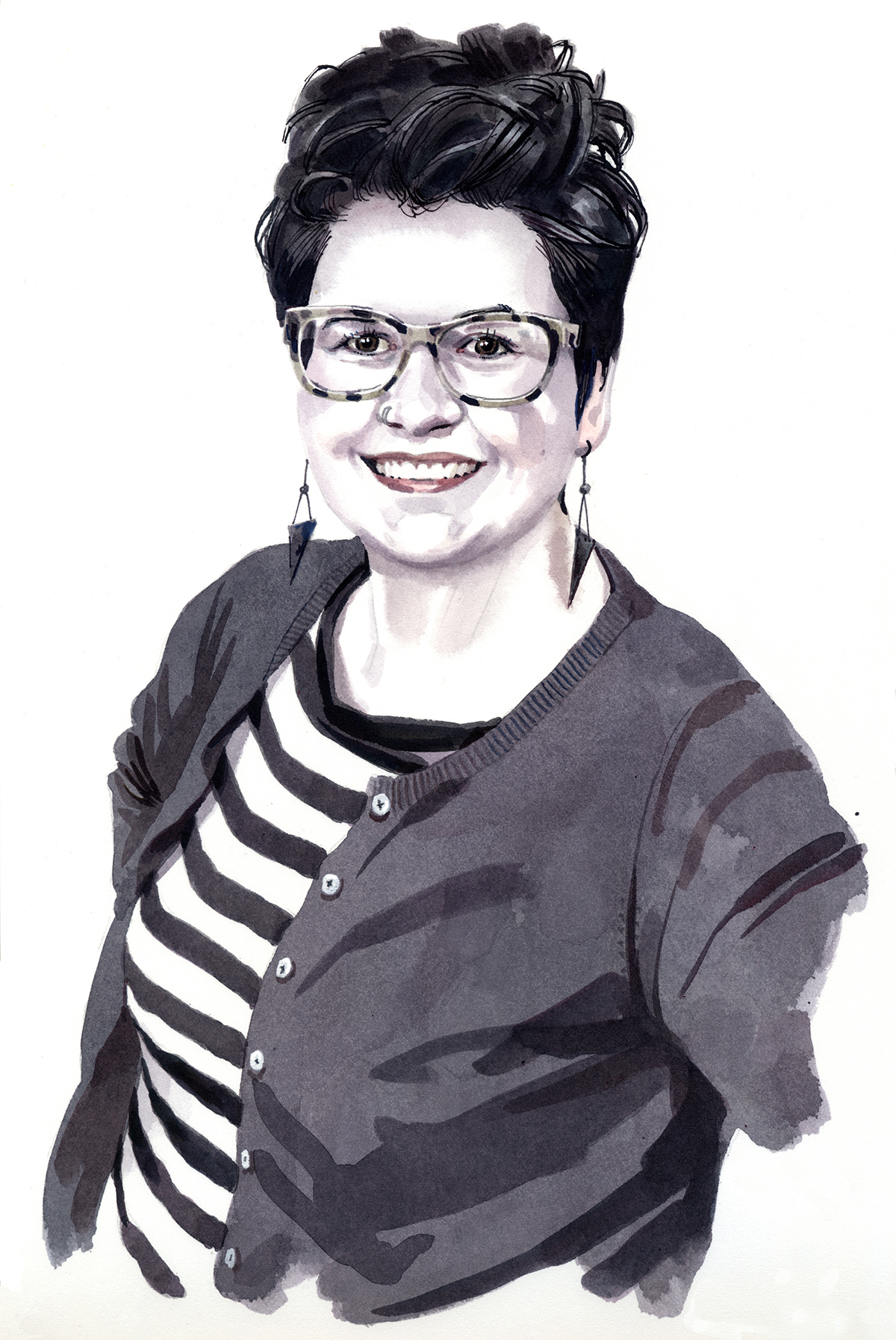Whitney Roach Seeks Ways to Make Schools More Inclusive for Queer Students
In K-12 schools, the researcher found little support for non-heteronormative students and families.

Illustration by Matthew Cook
Whitney Roach Seeks Ways to Make Schools More Inclusive for Queer Students
In K-12 schools, the researcher found little support for non-heteronormative students and families.
A gay child? Discussion of non-heteronormativity tends to be limited to adult experiences. Concerning younger people, anything related to the LGBTQ acronym is “such a taboo subject and is often misunderstood as oversexualizing children,” said Whitney Neumeyer Roach, a third-year PhD student in the College of Education’s curriculum studies program.
Still, she said, “There’s a large failure to account for the fact that queer adults had to navigate their youth.”
“There’s a large failure to account for the fact that queer adults had to navigate their youth.”
Whitney Roach
Describing her doctoral research as a passion project, Roach is studying how queer identities are represented — or more likely not represented — in educational settings between kindergarten and high school.
She is searching for evidence of queer people appearing in anything related to schools. She isn’t finding gay identities in materials sent home with students, which often advertise Dinner with Dad or a Mom’s Snack Club. She’s not finding much evidence of openly gay teachers, either.
All these signals about normalcy seep into a young person’s pores and can leave people who veer from heterosexual ideals — self-reported to be as much as 10 percent of the population — suffering in the margins.
And teachers in Texas are not free to share anything related to non-heteronormative identities.
Not seeing people like her, at school or elsewhere, changed Roach’s life course after she came out at 14. Citing a complete lack of support outside of her family, little representation of lesbians in media or anywhere else, and brutal ostracization from her peers, she dropped out of high school before her sophomore year.
She eventually returned to alternative schooling, then college and then fulfilled her lifelong dream of being an elementary school teacher.
Roach’s research, which she intends to apply by training future teachers to adopt a wider definition of inclusivity, is “a call to my youth not being supported, not seeing myself, not having a support system and not having language to speak about those feelings.”
Emotional and Social Hurdles for LGBTQ Students
High school students who identify as queer often face additional emotional and social hurdles. They experience higher dropout rates, drug use and suicidal ideation. Forty percent of homeless kids identify as queer.
To counter people who argue that discussion of queerness does not belong in public education, Roach said that kids go to school for more than memorizing facts. Teachers are responsible for emotional support, encouragement and modeling how to be a good person, “and part of that is building rapport, building relationships.”
“Queer individuals exist, and they have forever.”
Whitney Roach
Queer teachers, with murky protection from employment discrimination, are often encouraged by administrators to hide their identities. The imperative to stay in the closet makes no sense, Roach said. “We accept dating across the board for students. We do prom; we do dances; we say, ‘Oh, is that your little boyfriend?’ in kindergarten and first grade, and there’s never a presumption of oversexualizing. But for some reason, when we speak about queerness or gender identity or sexual orientation, the assumption is innately sex.”
Empathetic mentorship requires addressing a teacher’s potential blind spots, she said, which is why she plans to help educate future teachers at the college level. Educators’ limited definitions of normalcy can harm youngsters who rely on them to figure out how they will fit into the world.
The work matters, Roach said. “Queer individuals exist, and they have forever. So it’s not as though we’re discussing unicorns. We’re discussing people in the world.”

Your comments are welcome
1 Comment
Related reading:
Features, Research + Discovery
Kristof Pota Manipulates Metals to Treat Alzheimer’s
The chemist also uses metals to better the contrast agent for MRIs.
Features, Research + Discovery
Alessa Juarez Finds Responding to Mental Health Crises Requires Collaboration
De-escalating situations and improving services need an empathetic team approach.